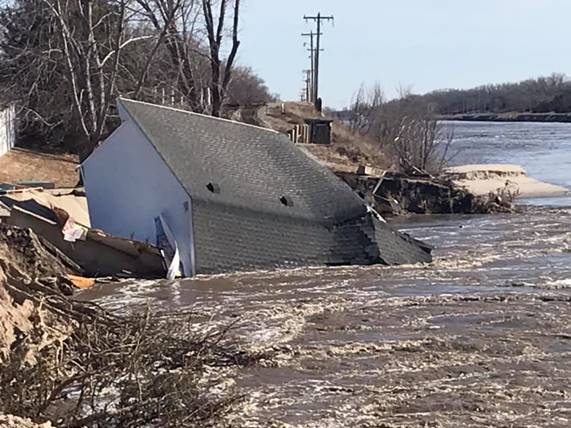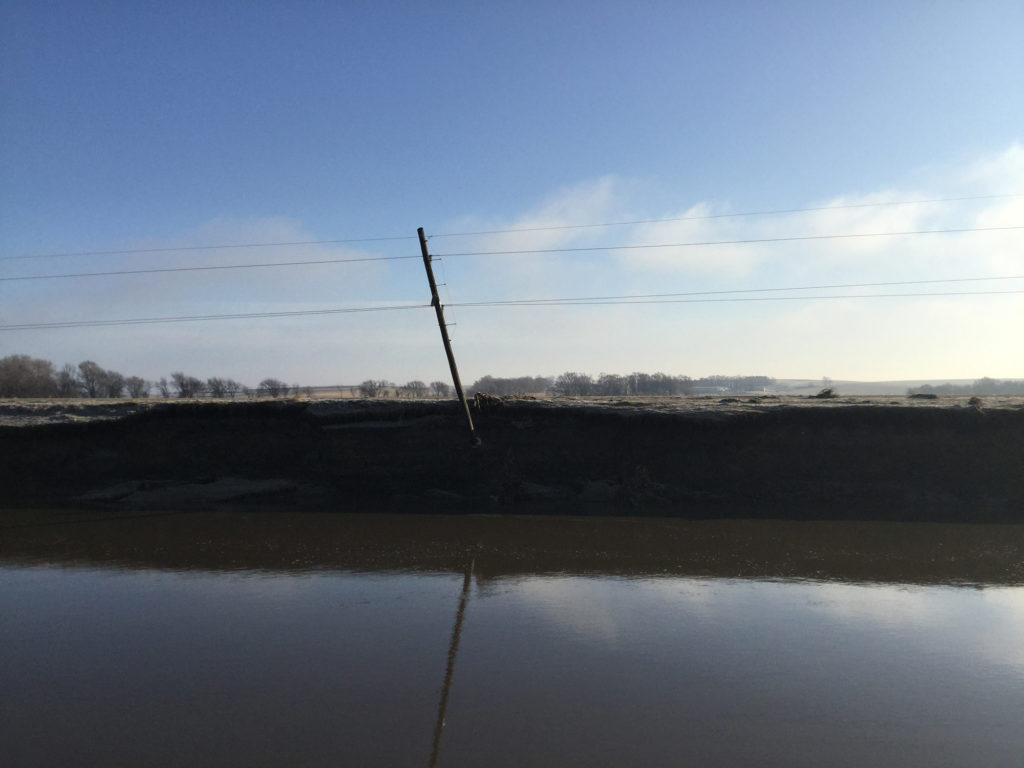
Torrential rains have caused major flooding in the upper Midwest, and public power districts in Nebraska, now under a federal disaster declaration, could spend weeks repairing equipment and straightening poles.
“Early estimates of the damage from the flooding is more than $700 million and is likely to increase,” said Kim Christiansen, general manager of the Nebraska Rural Electric Association.
“The impact on Nebraskans’ lives is dramatic,” said Christiansen. “People have lost their homes, farmers and ranchers have lost their cattle, entire towns have been evacuated or completely cut-off from their neighbors.” Officials in the state have described the flooding as the worst to occur in a generation.
“All of our major rivers have been having flooding problems over the past several days,” said Neal Suess, president and CEO of Loup Power District. The Columbus, Nebraska-based PPD serves about 20,000 meters, including many farmers and ranchers who depend on the PPD’s canal to water stock and irrigate crops during their growing seasons.
“We have two breaches that are allowing uncontrollable water flows into the Loup River right at our intake structure,” said Suess. “One of them is a gap of 50 to 75 feet, and the other is a gap of about 200 yards.”
A co-op-owned caretaker’s home on the facility’s grounds and several other support structures have been washed away by rising floodwaters, and Loup Power has had to reduce hydroelectric power production at the site.
“Downstream from there we have five to seven breaches in our canal system, and that water is running into fields and forested areas,” said Suess. “Since the canal is breached we won’t have water to generate electricity from our power house.”
The flooding occurred before the spring thaw, prompting water to accumulate over still-frozen fields. While farmers will be able to adjust their planting schedules, they may have to find other water sources to irrigate their crops, Suess said.
“Livestock has been stranded, and I know of a number of people who have lost quite a few animals,” Suess said. “We’ll be straightening and reinforcing poles for at least a few weeks, and repairing the canal could take a few months or longer.”
The affected public power districts have reported minimal outages, although many roads remain impassable, slowing damage inspections in some areas.
Lexington-based Dawson Public Power District reported about 700 of its 24,000 meters offline for several hours due to flooding in exurban areas near Kearney.
As floodwaters receded, PPD crews moved in and quickly repaired damaged ground-mounted transformers so service could be restored, said Marsha Banzhaf, manager of customer service for Dawson PPD. “We’re compiling reports on our damage because a federal disaster declaration has been issued.”

About 150 miles north, Cuming County Public Power District disconnected 18 meters for members in low-lying areas in anticipation of flooding last week.
“We’ve also had evacuations in some co-op-served communities, including parts of West Point, although the town has not flooded,” said Nikki White, communications manager for the West Point-based PPD. “We’ve had extensive flooding west of town and there are a lot of poles washed out.”
Other public power districts across the state also reported problems, but determining the full extent of the damage is delayed because many areas remain inaccessible.
“Many of our member-systems have sustained damage to their lines and poles but are having to wait for the waters to recede before being able to do a full assessment of the destruction,” said Christiansen. “The Nebraska Rural Electric Association is working to help our member-systems during the recovery.”
Derrill Holly is a staff writer at NRECA.